Refrigerant System Tests
REFRIGERANT SYSTEM TESTSSpecial Tool(s):

Special Tool(s)
Procedure 1 - Ambient Temperature At or Below 38°C (100°F)
NOTE:
- The system performance can be evaluated and diagnosed by analysis of the compressor suction and discharge pressures. The following procedure is used to determine if the system is operating at normal pressures.
- The procedure varies depending on the ambient temperature. If the ambient temperature is 38°C (100°F) or less, follow Procedure 1. If the ambient temperature is greater than 38°C (100°F), follow Procedure 2.
- If the A/C compressor cycles at any time during this test, refer to the diagnostic table.
1. Drive the vehicle or run the engine until it reaches a normal operating temperature.
2. Connect a manifold gauge set or refrigerant center with high-pressure and low-pressure gauges to the refrigerant system.
3. Set the climate controls.
- Set the A/C controls to MAX A/C, full COOL temperature, and the blower motor to HI.
4. Open all the vehicle windows and leave the hood open for the test. Open the rear hatch and the rear doors.
5. Confirm the compressor clutch is engaged and the engine cooling fan(s) are operating or engaged. Allow the vehicle to idle until the suction (low-side) and discharge (high-side) pressures are stable or fluctuate in a range that repeats.
6. Record the ambient temperature.
7. Record the discharge pressure. If the pressure is fluctuating, record the average value.
Normal Refrigerant Discharge Pressures:
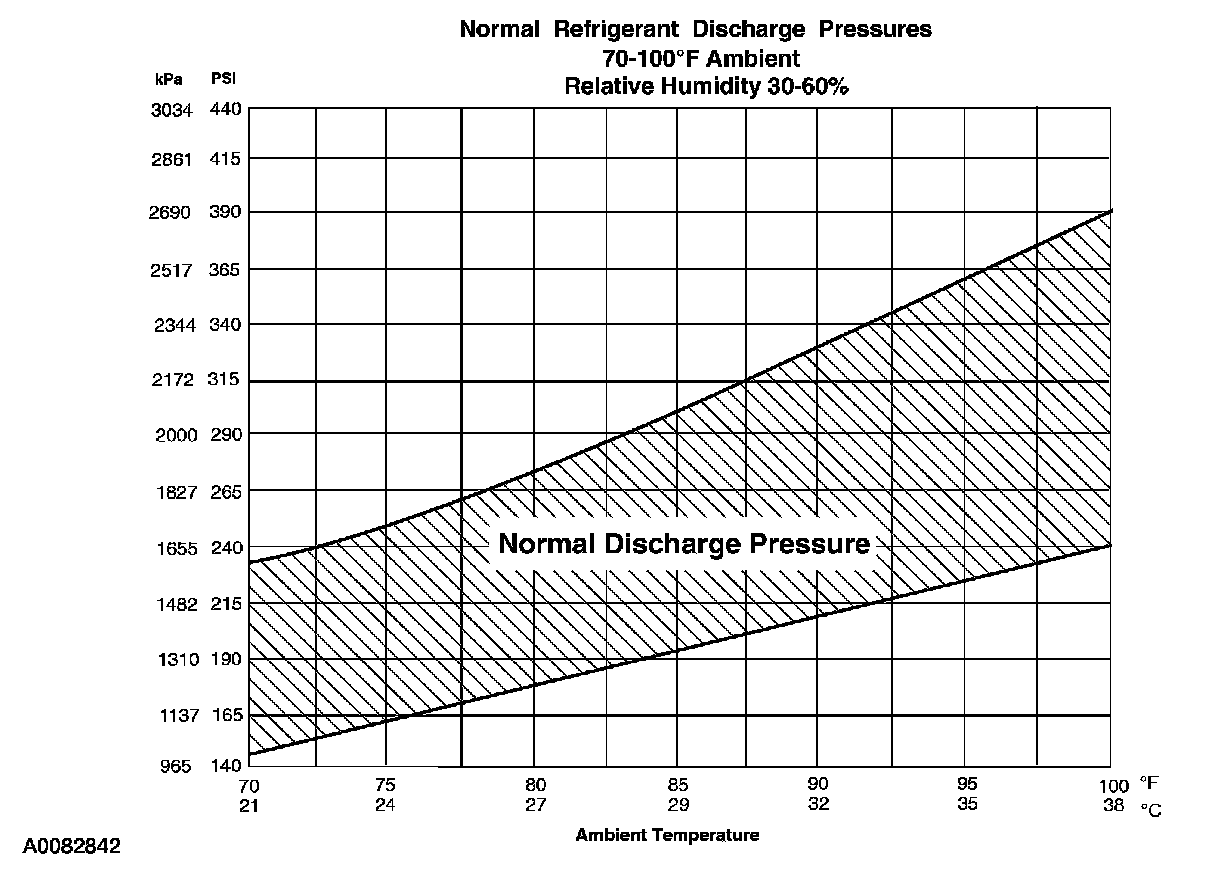
8. Determine if the discharge pressure falls within the normal operating limits using the Normal Refrigerant Discharge Pressures chart.
9. Record the suction pressure. If the pressure is fluctuating, record the average value.
Normal Refrigerant Suction Pressures:
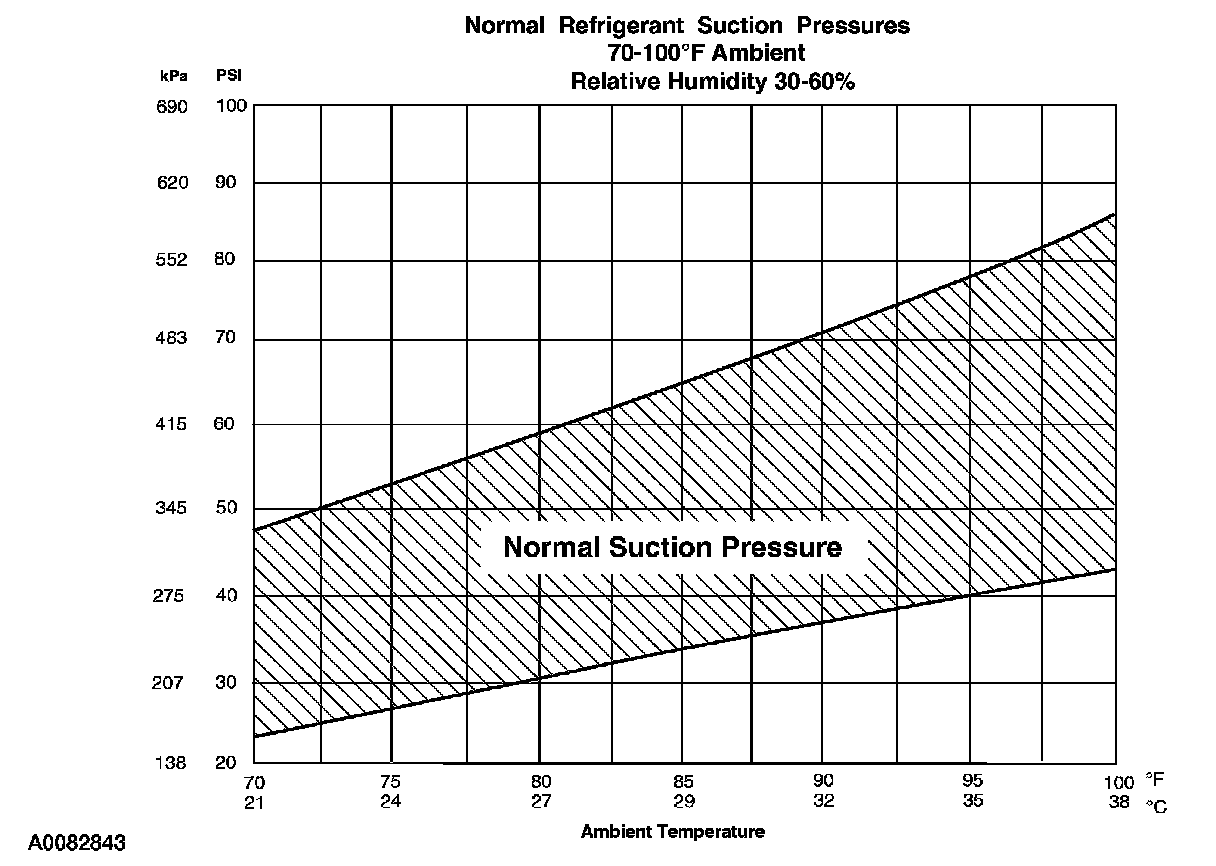
10. Determine if the suction pressure falls between normal operating limits using the Normal Refrigerant Suction Pressures chart.
11. Proceed to the diagnostic table.
Procedure 2 - Ambient Temperature Above 38°C (100°F)
NOTE:
- The system performance can be evaluated and diagnosed by analysis of the compressor suction and discharge pressures. The following procedure is used to determine if the system is operating at normal pressures.
- The procedure varies depending on the ambient temperature. If the ambient temperature is 38°C (100°F) or less, follow Procedure 1. If the ambient temperature is greater then 38°C (100°F), follow Procedure 2.
1. Drive the vehicle or run the engine until it reaches a normal operating temperature.
2. Connect a manifold gauge set or refrigerant center with high-pressure and low-pressure gauges to the refrigerant system.
3. Set the climate controls.
- Set the A/C controls to MAX A/C mode, full COOL temperature, and the blower motor to M1.
4. Open all the vehicle windows and leave the hood open for the test. Open the rear hatch and/or rear doors (if equipped).
5. Confirm the compressor clutch is engaged and the engine cooling fan(s) are operating or engaged. Allow the vehicle to idle until the suction (low-side) and discharge (high-side) pressures are stable or fluctuate in a range that repeats.
6. Record the ambient temperature.
7. Record the discharge pressure. If the pressure is fluctuating, record the average value.
Normal Refrigerant Discharge Pressures:
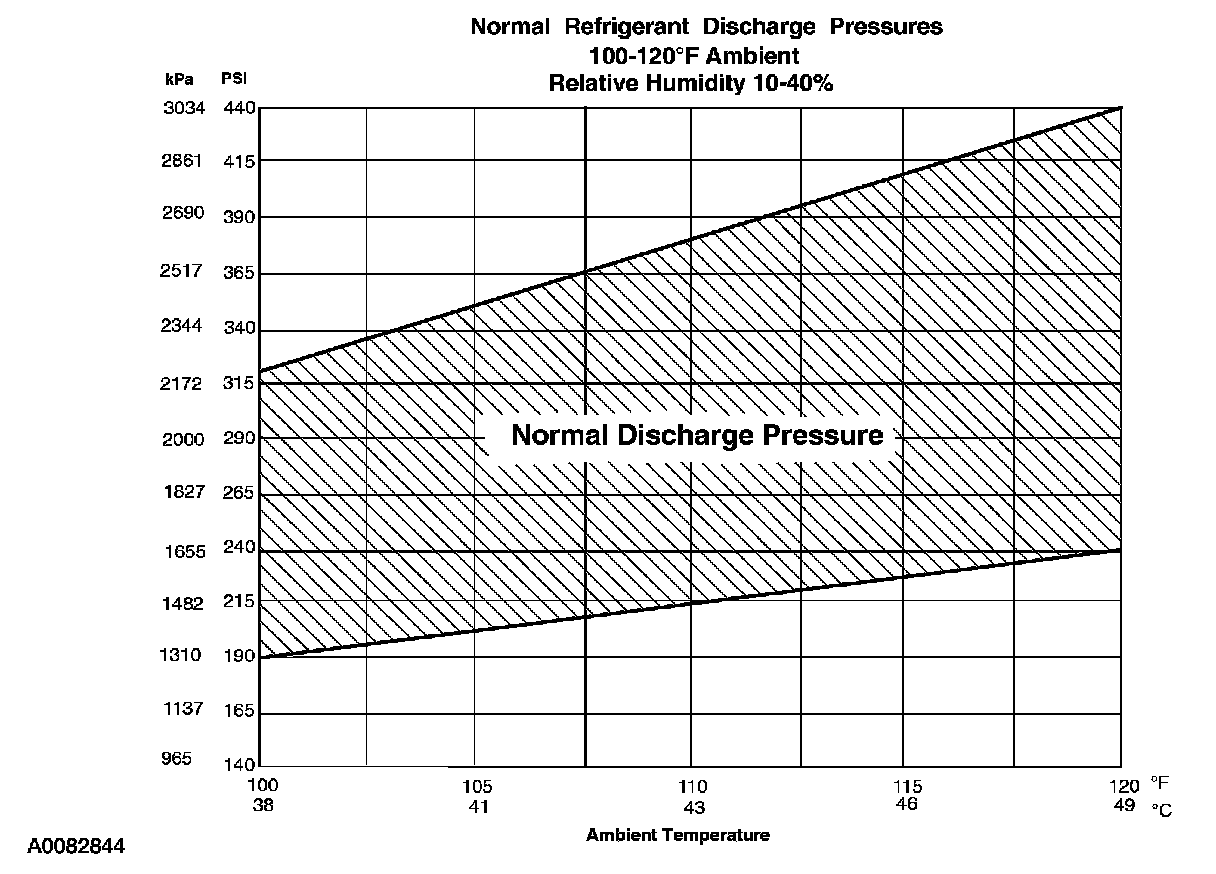
8. Determine if the discharge pressure falls within the normal operating limits using the Normal Refrigerant Discharge Pressures chart.
9. Record the suction pressure. If the pressure is fluctuating, record the average value.
Normal Refrigerant Suction Pressures:
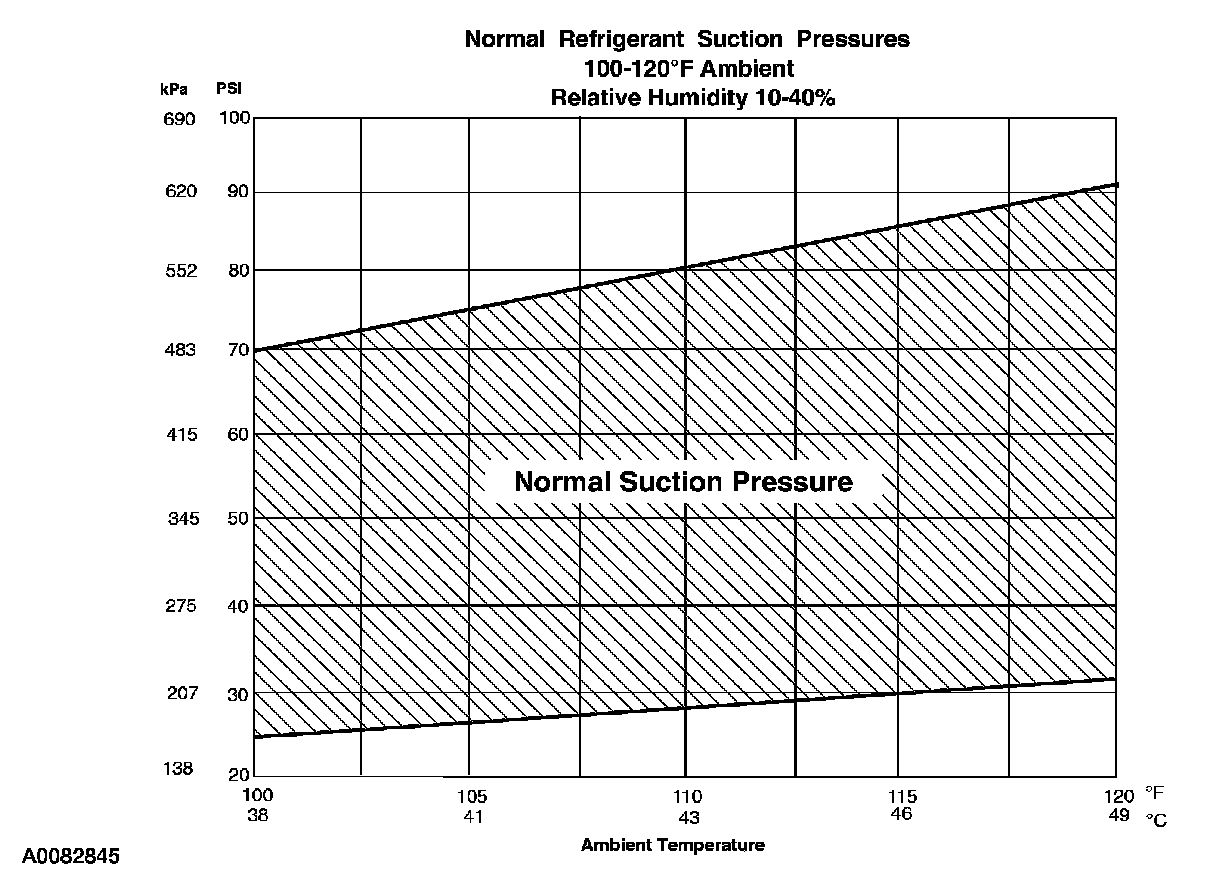
10. Determine if the suction pressure falls between normal operating limits using the Normal Refrigerant Suction Pressures chart.
11. Proceed to the diagnostic table.
Diagnostic Table
Part 1:

Part 2:
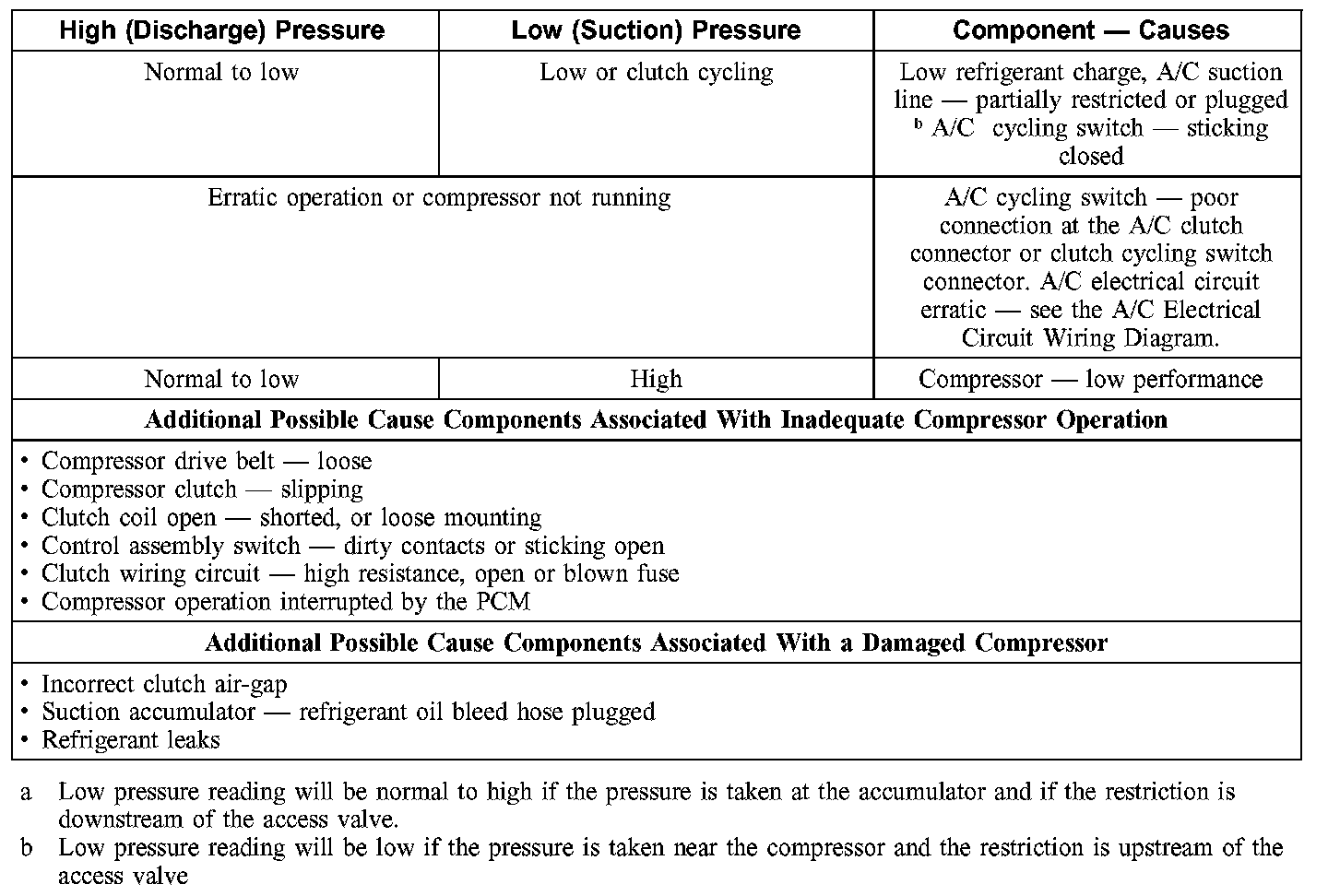
1. NOTE: The table is used to guide diagnosis of the refrigerant system if the operating pressures are outside the normal limits.
Proceed to the diagnostic table.